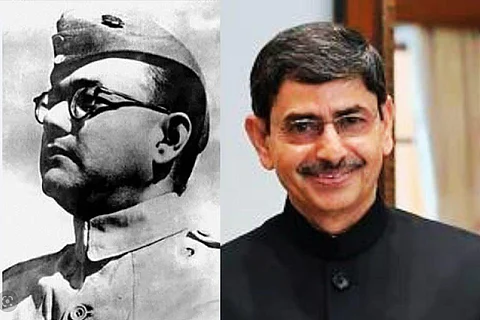

Tamil Nadu Governor RN Ravi has said that India owes its Independence to Subhash Chandra Bose rather than MK Gandhi. Speaking at the Anna University in Chennai on January 23, Bose’s death anniversary, Ravi made several claims including that the “non-cooperation movement had fizzled out” and that it was Bose’s armed fight that led India to its Independence. While many of his claims are historically inaccurate, Ravi’s speech raises the question of whether this is an attempt to woo those who belong to the Thevar caste in Tamil Nadu.
Thevars have historic links to Bose and the All India Forward Bloc (AIFB) through Muthuramalingam Thevar — a caste leader who played a huge role in instigating the Mudukulathur anti-Dalit violence of 1957. Muthuramalingam was a staunch supporter of Bose when the latter was contesting for the presidency of the Indian National Congress in the early 1940s. When Bose broke away from the Congress to form the AIFB, Muthuramalingam mobilised support for him among Thevars across Tamil Nadu. Even today, the image of Bose is widely prevalent among the imagery used by Thevars on banners and posters.
The Thevars form a formidable vote bank in Tamil Nadu with all major parties in the state making staunch efforts to appeal to them. An intermediate caste group classified as Other Backward Class (OBC), Thevars wield immense social, political, and economic power, particularly in the southern districts. Further, the Thevar caste cluster comprises three communities: Agamudaiyars, Kallars and Maravars, all of whom are routinely accused of violent caste atrocities against Dalits.
Speaking to TNM, historian Stalin Rajangam says that while he does not agree that the Governor may be trying to attract Thevar voters, he points out that the continued presence of Bose in the Thevar caste iconography has taken on a different meaning among the youth of this caste-cluster. “The historic links to Bose and Muthuramalingam’s membership in the AIFB are mostly remembered only up until the previous generation of Thevars. The current generation predominantly wrongly thinks that Muthuramalingam started a political party — what its name was, they don’t know — and that Bose was a part of it. His military attire used to be seen as a symbol against British rule. Now it is interpreted among Thevars as a symbol of masculine valour that ‘bravely’ takes on all other castes who are opposed to them. It is a form of militant supremacy.”
As Stalin mentions, the use of Bose's image in Thevar caste iconography is so ubiquitous, appearing in wedding invitations, political rallies, or even stickers on vehicles, that it has become a caste indicator in Tamil Nadu’s southern districts like Tirunelveli. “This is the case to such an extent that other castes have more or less stopped talking about Bose since they fear that whatever they say will be construed as a comment on Thevars.”
KA Manikumar, author of Murder in Mudukulathur: Caste and Electoral Politics in Tamil Nadu told TNM that Bose's popularity was so great at the time of the riots, that many believed he had not really died in the Japanese plane crash in 1945.
Manikumar writes in his book, “Following the call from [Muthuramalingam] Thevar, the Forward Bloc – through printed pamphlets and over microphones – asked the Maravars to assemble with their weapons at Peraiyur on 28 June [1957]. In response, about 7,000 persons armed with vel-kambus and aruvals [spears and machetes] gathered at Peraiyur. Muthuramalinga Thevar said that before the advent of the next ‘Skantha Sashti’ (Lord Muruga’s birthday), Netaji Subhash Chandra Bose would arrive and take over the Indian government and then he (Muthuramalinga) would be ordained as the sole ruler of ‘Maravarnadu’ [literally Maravar Land]. He exhorted his followers not to be afraid of anybody in India, including Prime Minister Nehru.”
As he points out further to TNM, Bose was seen as the counter to Nehru in New Delhi, while Muthuramalingam was projected as the counter to then Tamil Nadu Chief Minister Kamaraj of the Congress party. Further, at the time, tensions between Nadars (OBC), the caste Kamaraj was from, and Thevars ran high with Muthuramalingam, even alleging before the riots broke out that Dalits and Nadars were being “instigated” against Thevars.